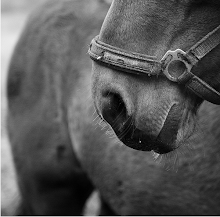
Protest, though important as a way of raising awareness, to me wont do enough, as even the most open-minded and accepting of us are still suffering the affects of thousands of years of homophobia engrained in the collective consciousness.
‘Gay Pride’, the banner ideal, is a purely hypothetical notion. So far we have gotten to the stage where we identify homosexuality as ‘acceptable’, that there’s ‘nothing wrong with it’. This unfortunately caps our understanding of it’s importance at the mere point that it should be ‘allowed’. What many don’t understand, even the gays themselves, is that their place in society is crucial.
Even amongst the gay-friendly enclaves of inner-city gen-Y, we are still not convinced it’s more than OK to be gay.
A few years ago, university lecturer friend of mine told me that there is an fundamental scientific difference between the brain of a gay male and the brain of a straight male. It lies in the corpus callosum – the space between the left and right hemispheres of the brain.
The corpus callosum of a gay male brain is wider, meaning that when motor neurons are firing from one side to the other, there is “more room for emotion to get in the way of the decision making”. A straight male’s hemispheres are closer together, meaning their decision making is more “mechanical”.
The brain of a gay male is therefore more closely resembling the brain of the heterosexual female. And for lesbians, their decision making is more “mechanical” rather than “emotive” due to a similarity with the heterosexual male.
I have often reassured recently outed gay guys by sharing this anecdote, so that they should think of them self as super-human rather than handicapped, as they present the greatest strengths of a man in physicality, and the greatest strengths of a woman in mentality.
Unfortunately we are living at the tail end of an era in which civilization has denied the feminine principle. Christianity turned the Pagan celebration of a “Mother Earth” into a “Heavenly Father” and continued to disavow women through witch burnings and the relegation of women to the duties of the home.
Even now, the most homophobic cultures are the ones in which women are seen as secondary to men, the most obvious being Middle Eastern and African.
There is shame associated with boys who are camp or ‘act gay’, when in actual fact they are just acting feminine – a trait which is seen as weak or flawed because somewhere along the way we were taught that being a woman was weak and flawed.
A common ‘bible belt favourite’ argument against the acceptance of gay is that homosexual sex is “unnatural” because it doesn’t eventuate in reproduction.
A theory I’ve encountered suggests that gays are meant to be responsible for giving birth to a different type of sociological function, that of new ideas and ways of thinking.
Without the fundamental drive to procreate getting in the way, the homosexual is liberated to pursue a life dedicated to the creation of thoughts and ideals which beautify and change the world.
There is a reason why the arts are filled with homosexuals - it’s just them enacting the destiny as prescribed to them by creation itself: to be creative, to create life, but in ways in which we haven’t yet known it.
Leonardo DaVinci and Michelangelo are prime examples: both clearly responsible for dramatic leaps in human consciousness, both documented as having relationships and fascinations with men – as seen in the adoration of the male form in their work: sprawling homo-erotic murals that play out like renaissance era Calvin Klein campaigns. Ironically enough, all commissioned by the Church.
There’s a reason why the gay brain is formed as it is: more available to the emotive decision making of art and creation. There’s a reason why homosexuals exist in society, as an antidote, a means to balance the hetero-centric ideal which has reigned for the past twenty centuries, this masculine principal which has left the world in the state it’s currently in.
Today’s rally may eventuate in the acceptance gay civil unions in this country, but until gays learn to harness their strengths and recognise that they have an important role to play in the society’s evolution, rather than begrudge themselves the celebration of their strengths, ‘gay pride’ will be something that exists only in a colourful flag or on a parade route.
We would be better united if we were better as individuals.




















